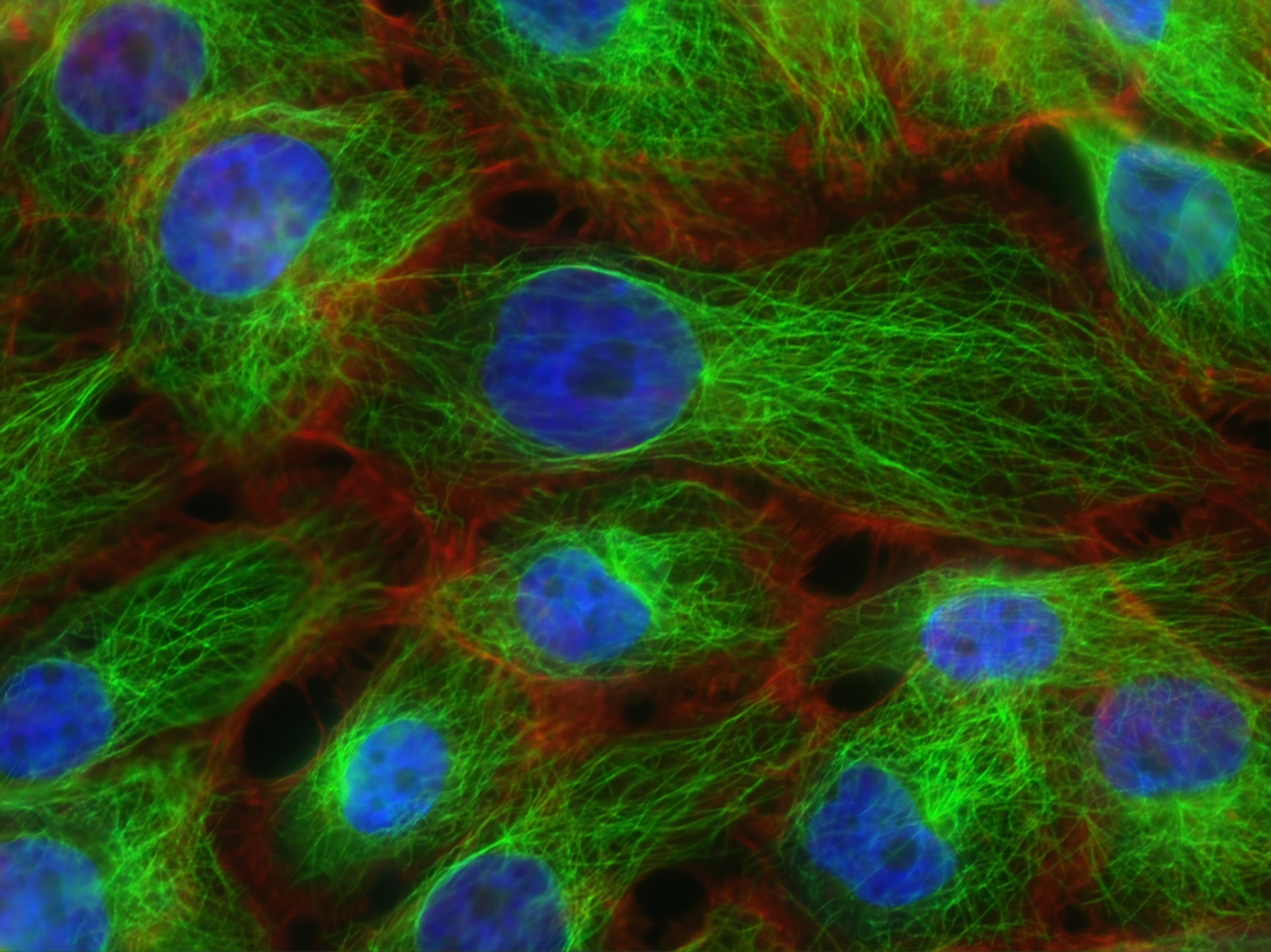LuCED test development at the 24th International Conference for Lung cancer screening
Getting a Better Look at Lung Nodules: Cell Scan Delivers Images Without X-rays An Interview With Thomas Neumann, MD
The search for a screening tool that can help detect lung cancers at early stages has been a focus of research aimed at the leading cause of cancer death in the United States. While much excitement has been created by the performance of helical computed tomography (CT) scans in a large National Cancer Institute (NCI) trial that ended last year, work continues on creating imaging technology that clinicians can use for improved diagnoses.
VisionGate, Inc is a 10-year-old company that has developed the Cell-CT system, which produces 3-dimensional (3D) images of cell samples without the use of x-rays. In September, VisionGate opened a laboratory in Phoenix, Arizona, near 1 of its academic research partners. The company is working on studies needed to support an application with the FDA to bring the technology to market.
Here, Thomas Neumann, MD, vice president for Medical Sciences at VisionGate, discusses the technology.
ONC: Please describe how the Cell-CT technology works.
Neumann: VisionGate named its instrument the “Cell-CT” because it is used to image cells with techniques that are generally applied in CT. However, the Cell-CT does not work with x-rays; it employs light sources common in standard microscopes. The Cell-CT is used to create high-resolution 3-dimensional (3D) images of cells for the diagnosis of important diseases, such as cancer.
Briefly, suspensions of cells isolated from human specimens are fl owed through a rotating glass capillary tube smaller than a human hair. One by one, the rotating cells pass by a microscope objective that images each cell from hundreds of different angles. The images are then automatically reconstructed, using CT, into 3D objects of unsurpassed precision, allowing for improved detection of cellular changes specific to certain diseases.
Analysis can be done through visual examination of the 3D images by a cytologist or cytopathologist, or automatically by using computer programs that are trained to recognize cell features of diagnostic value. Principally, any cellular specimens can be imaged on the Cell-CT. Sputum samples, which contain cells shed from the inner lining of the lungs, are used for lung cancer screening. To produce these specimens, patients are asked to expectorate phlegm (sputum) from their lungs, a collection procedure that is both easy and noninvasive.
Would the Cell-CT replace x-ray CT scans or be used to enhance the results of current technology?
These 2 imaging techniques are complementary rather than competitive. The Cell-CT can detect cancer cells in sputum, whereas x-ray CT is used to discover suspicious nodules in the lung. The Cell-CT will not replace x-ray CT. Lung cancer usually develops over decades, often as a result of prolonged exposure to carcinogenic substances due to smoking. The features of the epithelial cells that comprise the inner lining of the lungs are indicative of the cancer risk. A larger degree of abnormality in the cells corresponds with an increased likelihood to develop lung cancer in a certain time window. Thus, the Cell-CT is not only trained to detect cancer cells in lung cancer patients, it can also characterize the degree of precancerous changes in cells from at-risk patients. Since the Cell-CT test is noninvasive, economical, and easy, it can be used repeatedly. Cytology is known for very high specificity—ideal for combination with x-ray CT, which is associated with a high false-positive rate. An efficient pretest based on automated sputum cytology would significantly improve the cost effectiveness of x-ray CT.
In what stage of development is the Cell-CT technology?
The current generation Cell-CT was developed for applications in scientific research and small clinical studies. A number of published studies in the biomedical field have established the superiority of the Cell-CT. Several of our instruments have been purchased by research institutions. We are currently developing the next generation of Cell-CTs that will serve as diagnostic platforms in large-scale laboratories. The new-generation Cell-CT will analyze human specimens automated and with high throughput.
Please discuss the $2.6 million grant the company won from the National Institutes of Health (NIH).
The NIH has designed a program called Biomedical Research, Development, and Growth to Spur the Acceleration of New Technologies (BRDG-SPAN). This program provides significant financial support for accelerating the market introduction of technologies with the ability to lead to a significant breakthrough in medicine, combined with a significant business potential in United States and/or global markets. The data on Cell-CT performance submitted to the NIH convinced the review panel of the impact of VisionGate’s technology. Other important review criteria were the research and development strategy, and the business plan, as well as the qualification of the team. VisionGate was selected among 10 awardees for this program.
What studies/trials are underway or planned?
VisionGate has a number of ongoing clinical collaborations on several important diseases, with the main focus on lung cancer. We use sputum specimens from lung cancer patients and noncancer-risk patients to train our system to automatically distinguish between normal cells, cancer cells, and cells that are on the path to becoming cancerous. Additionally, we are storing a large number of sputum specimens to be used in a screening study once the training is completed. The main objective of these trials is to demonstrate high sensitivity and specificity for abnormal cells in sputum.
Which lung cancer patients would most likely benefit from the Cell-CT technology? That is, early or later-stage patients?
Early-stage lung cancer patients who typically have no symptoms will likely benefit most from the Cell-CT technology. This does not mean that the detection of advanced cancers is unimportant—the treatment options for late- stage cancers are improving. Furthermore, an enormous future potential for the Cell-CT lies in lung cancer prevention. There are already several drugs in clinical trials that promise to reverse the abnormal features in cells of the lung, and to reduce the cancer risk. The Cell-CT would be the ideal technology for selecting the right patients and for monitoring the treatment response in lung cancer prevention therapy.
Explain why VisionGate describes the Cell-CT as platform technology? What other cancers could it analyze?
The Cell-CT is a platform technology because it enables a range of diagnostic and scientific applications. VisionGate has performed a number of research studies that expanded the capabilities of the Cell-CT beyond lung-cancer. For example, we have imaged clusters of nanometer-size particles incorporated into cells, the 3D-distribution of specific proteins within individual cells, and chromosome sets of the same cells in brightfield and fluorescence mode. In the diagnostic area, we are particularly interested in bladder cancer, esophageal cancer, and oral cancer. We have also developed a Cell-CT-based test for aspiration of gastric contents in conjunction with gastroesophageal reflux disease (GERD). Chronic exposure of small amounts of stomach contents can cause lung conditions, such as chronic cough, asthma, and pulmonary fibrosis. The Cell-CT test measures the uptake of lipids (derived from food particles) in lung macrophages—the cell type responsible for keeping the lung “clean.” The test result can be used to detect aspirators among GERD patients and for monitoring treatment success.
What technological advances make Cell-CT possible?
Clearly, the many advances in computer technology have enabled us to handle such data-intensive processes as image construction, processing, and analysis. For example, each single cell is digitally imaged in 2D from 500 different angles, and all these images are then tomographically assembled into a virtual 3D space. This computation has to happen very fast in order to achieve reasonable throughput for cell specimens. Other technological advances that have benefited the Cell-CT development are the precision of microfabricated components that are used in our disposable specimen cartridges.
What is VisionGate’s role in the International Early Lung Cancer Action Program (I-ELCAP) and the Biodesign Institute at Arizona State University?
The I-ELCAP and VisionGate have longstanding collaborations. I-ELCAP-participating sites like the University of Toronto, Swedish Medical Center, and the University of Navarra (Spain) have provided us with sputum specimens from lung cancer patients or high-risk patients to train the Cell-CT and for upcoming screening studies. The Biodesign Institute was the first scientific organization to purchase a Cell-CT system for scientific research. The Biodesign Institute and VisionGate maintain a number of collaborative research studies.
When do you think this product will be ready to submit for FDA approval? When do you think it might reach the market?
We plan to complete our FDA studies by the end of this year. Market introduction depends on a number of factors, including financial aspects, production capabilities of the manufacturer, and partnering with a large corporation with a footprint in the diagnostic market. VisionGate may need at least 12 months following FDA submission for the regulatory clearance that would allow the company to market the sputum test for lung cancer.
What are the major challenges you and your company have faced thus far in developing this technology? What challenges loom in the future?
The biggest challenges so far were in the translation of the Cell-CT prototype into a system that fulfills the operational and throughput requirements of a clinical lab. The principles of the Cell-CT technology were established early, and the first generation of Cell-CTs quickly found use in scientific research. Diagnostic platforms, however, have additional requirements, such as high-throughput capabilities, automation, and standardization of specimen collection and preprocessing (fixation, staining, etc). This requires aligning the research and development efforts for hardware, software, and specimen preparation.
The major challenges lie behind us. We are on a clear path to completing the development of a high-throughput system for VisionGate’s lung-cancer test (LuCED). VisionGate has set an ambitious timeline for bringing the LuCED test to the market, which presents an ongoing challenge.



